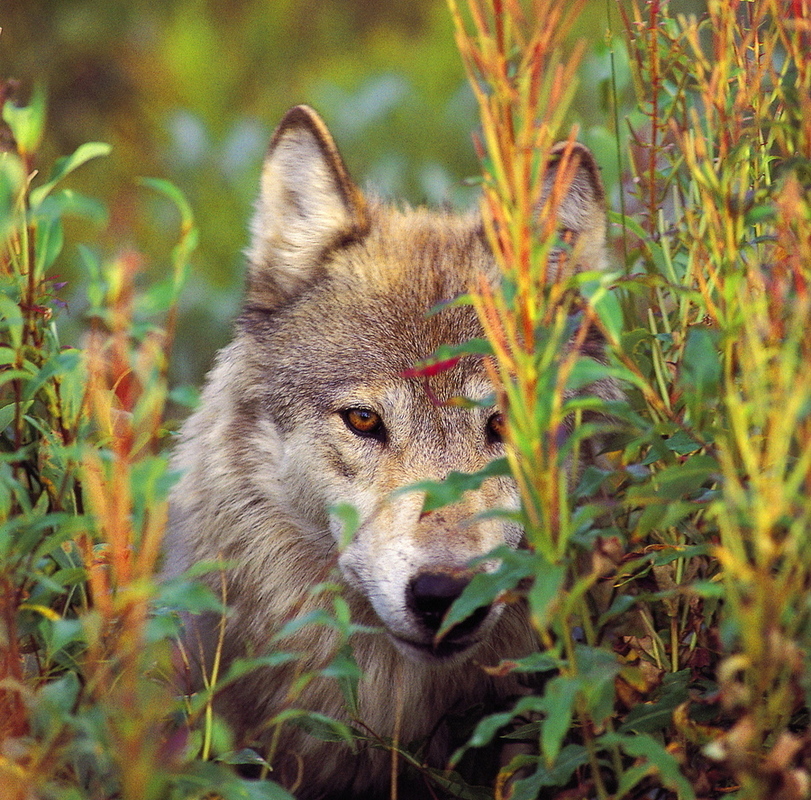
Wolves in Alaska represent for some an icon of the rugged north and a land left undisturbed—a symbol so important people will travel thousands of miles and spend great amounts of money to see them. For others, wolves are viewed as a consumable resource, providing important furs that keep so many people warm in the harsh environments of the arctic and interior Alaska. And the prevailing political opinion in the state is that wolves are a direct threat to game species such as moose and caribou, so predator control has long been in effect. With so many passionate views, and politically appointed decision-makers, it is no wonder the state is in turmoil over its wildlife resources.
The wolves have endured a series of blows this winter, beginning with the untimely death of perhaps their greatest advocate in the state, Dr. Gordon Haber. As an independent researcher, Haber spent the better part of four decades closely studying and advocating for the wolves not only in Denali National Park, but elsewhere in the state.
In early March, the State Board of Game ignored requests from the National Park Service and its biologists, many wildlife and conservation groups, and numerous local citizens to reinstate, and even slightly enlarge, no-take wolf buffer areas located immediately adjacent to Denali National Park. The wolf buffer, which has been in place for the last six years, would have continued to prevent wolves within it from being hunted or trapped. Park boundaries, while drawn on maps of the area, are obviously not recognized by wildlife. NPS managers are tasked with managing for healthy wildlife populations, which can be difficult to do when park animals regularly cross its boundaries. In Denali, once those animals leave the park, they are on state land where wildlife is subject to intensive management for the greatest possible game species yield (moose & caribou). Park managers have long recognized the buffer area as important habitat for Denali National Park wolves straying beyond the park boundaries in pursuit of winter caribou. Not only did the Board of Game disregard this information as a viable concern and vote to eliminate the Denali wolf buffer, the Board also instituted a six-year moratorium on considering the issue again.
The Alaska Department of Fish and Game has drawn attention in the last week for a couple of controversial moves. As part of Fish and Game’s intensive management for maximum yield of the Fortymile caribou herd and moose in the eastern Interior, the agency is using fixed wing aircraft to spot wolves and then returning in helicopters with gunners to shoot them. They hope to remove and kill 185 wolves through the efforts of trappers, hunters, private pilots and the state, leaving about 100 wolves remaining in the control area. While this is controversial in itself, last week the State’s team killed an entire pack of wolves just outside of Yukon Charley Rivers National Preserve, including two wolves collared for research by the National Park Service. Fish and Game had agreed beforehand that it would not kill wolves collared by biologists from the Yukon Charley Rivers National Preserve, and then afterwards said they killed the wolves wearing radio collars by mistake.
The second controversial ADF&G issue involves the appointment of Corey Rossi to be the new Alaska Department of Fish and Game’s Director of the Division of Wildlife Conservation. Given his lack of a college degree or other qualifications necessary for even an entry-level biologist position within the Division, a group of 40 former agency biologists are crying for his removal. They cite concerns regarding his lack of scientific background and the potential move the Division is heading regarding managing Alaska’s wildlife—a move away from the standard of science-based management, and toward a simplistic abundance management model where the single, overriding objective is maximum production of wild game meat. Thus far, the Commissioner of Alaska Department of Fish and Game is standing by his leadership choice.
What does all this mean for Alaska and it’s great wealth of wildlife? What does it mean for those who are non-consumptive wildlife “users”—those who rely upon wildlife for tourism, photography, and as indicators of a healthy ecosystem? The answer isn’t simple or clear, and will likely be a moving target as politics, appointees, climate change, public views, and other factors evolve over time. For now, despite the hostile environment wolves and other large predators may experience elsewhere in the state, Denali National Park, and other national parks within Alaska are sanctuaries where nature’s food chain remains un-manipulated (at least while the animals stay within the boundaries). Denali continues to be one of the best places for viewing wolves in North America, a place that illustrates there are economic rewards in watchable wildlife, and where we as humans might be reminded of what is truly wild.



